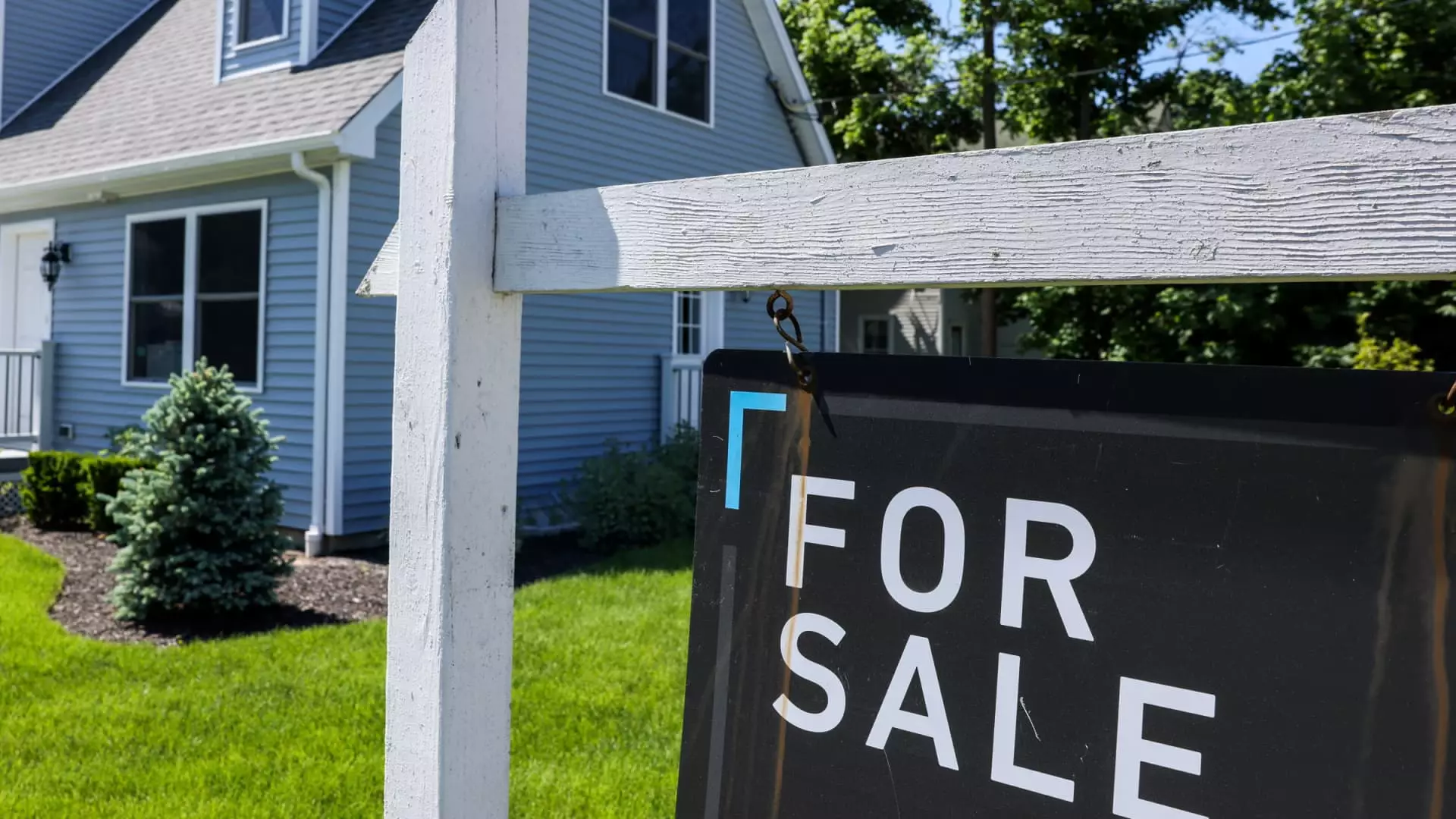Last week, the financial market landscape saw a whirlwind of volatility that catalyzed a notable drop in mortgage interest rates. This drop led to an impressive 20% surge in mortgage applications, highlighting yet again how sensitive the housing market is to fluctuations in interest rates. According to the Mortgage Bankers Association’s data, this jump to the highest application volume since September 2024 signifies more than just numbers—it reflects the anxieties and aspirations of countless prospective homeowners navigating these choppy waters.
Interest Rate Dynamics: A Double-Edged Sword
As mortgage interest rates fell, the average contract rate for 30-year fixed-rate mortgages for conforming loans notably decreased to 6.61%. This rate, while significantly improved from 6.70%, represents a mere blip on the radar when viewed in the context of historical trends. Such a minor shift could illicit empirical optimism; however, it belies an underlying concern about the sustainability of these rates. Borrowers catching the wave of reduced rates might feel a sense of urgency, especially as the specter of rising rates looms large.
The intrigue lies in the demographic of borrowers. The uptick in refinance applications soaring 35% suggests that homeowners entrenched in higher-rate mortgages are seizing this chance to pivot. However, it’s crucial to note that this surge is a reactive measure rather than a proactive choice. As those looking to refinance now find themselves in a precarious balancing act, it raises questions: Are we truly stabilizing, or are we simply reacting to a temporary reprieve?
The Housing Market’s Dilemma: Balancing Supply with Prices
Intriguingly, the 9% increase in mortgage applications for purchasing homes indicates that consumer confidence is not entirely waning. At the same time, however, homebuyers are faced with a landscape marked by soaring prices even as new listings flood the market. This dual reality of escalating prices combined with increased availability creates a paradox. Housing, historically viewed as a secure investment, is becoming complex as fluctuations create an atmosphere laden with uncertainty.
The rise in adjustable-rate mortgage applications signifies a shift in how borrowers perceive risk. As adjustable-rate mortgages made up 8.6% of total applications, it’s clear that even amidst economic fluctuations, some buyers are opting for these options to mitigate short-term costs. The lowered interest rate for 5/1 ARMs, now crossing into the emotionally appealing 5% range, further fuels this trend. However, this move also introduces a new layer of unpredictability—one that could lead to disillusionment if rates jump again in the future.
What Lies Ahead: An Uncertain Future
Despite the recent uptick in mortgage demand indicating a fleeting moment of optimism, caution is warranted. As rates began to rise again early this week, reversing the previous week’s gains, the reality that these fluctuations may not stabilize looms ominously over the housing market. Predictions regarding further volatility, particularly influenced by geopolitical tensions and economic tariffs, add another level of complexity.
The statements by industry experts reinforce the sentiment that while a momentary dip in rates can spark significant activity, true stability remains elusive. Homebuyers and homeowners alike must navigate a landscape filled with uncertainty, making informed decisions that weigh immediate benefits against potential long-term repercussions. In this climate, the search for stability amidst the chaos of financial markets is not only daunting but essential for sustainable growth in the real estate sector.

